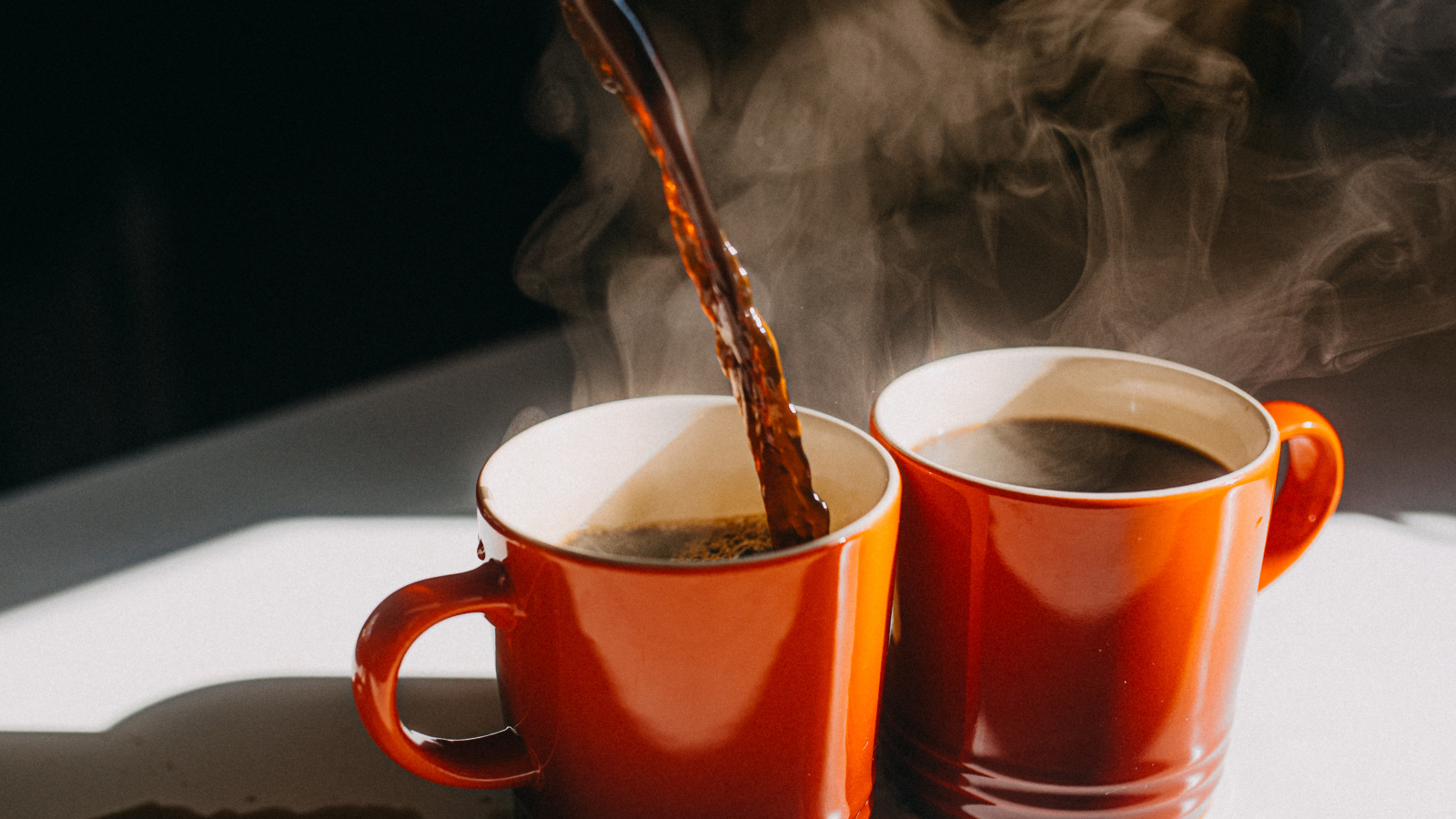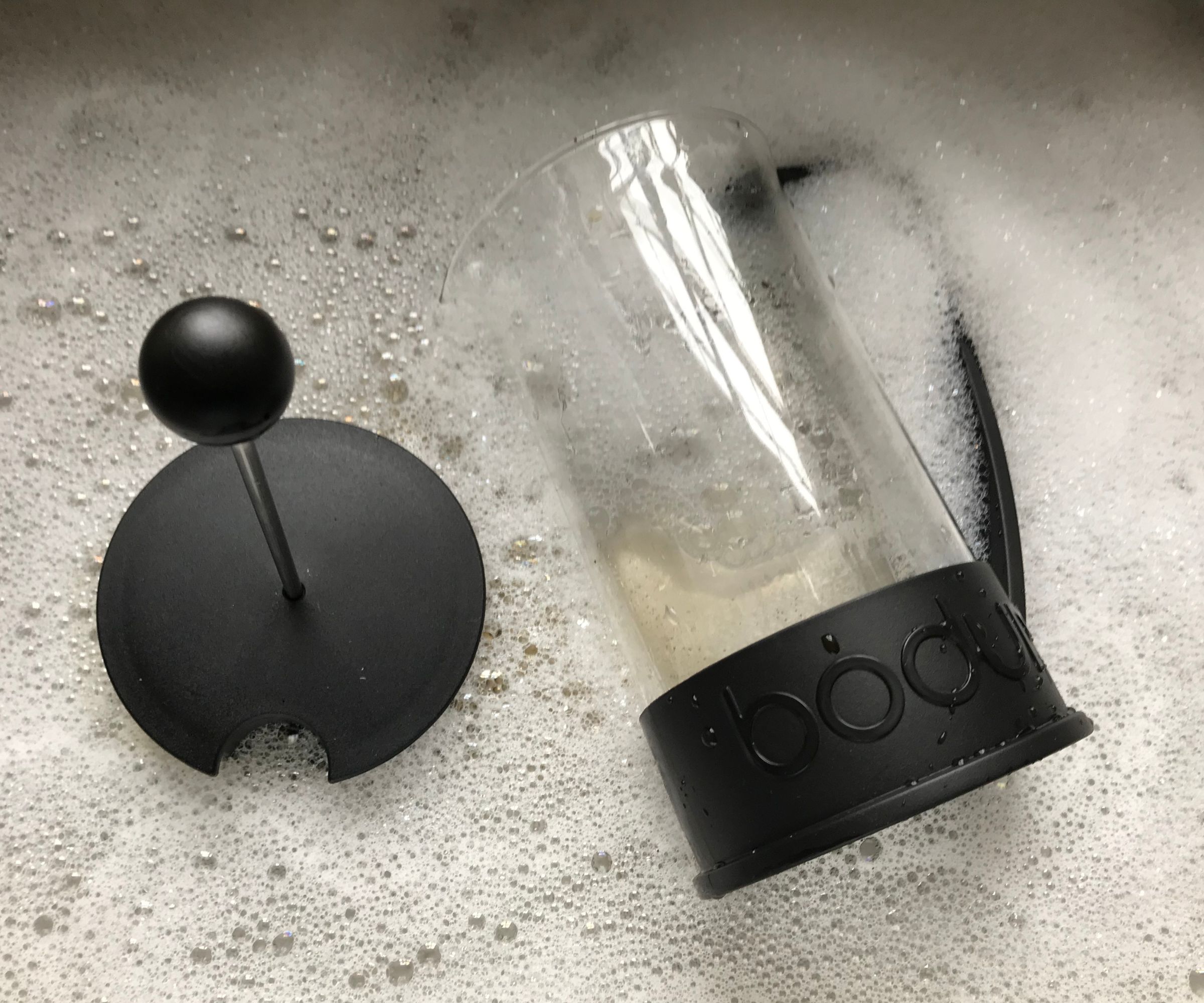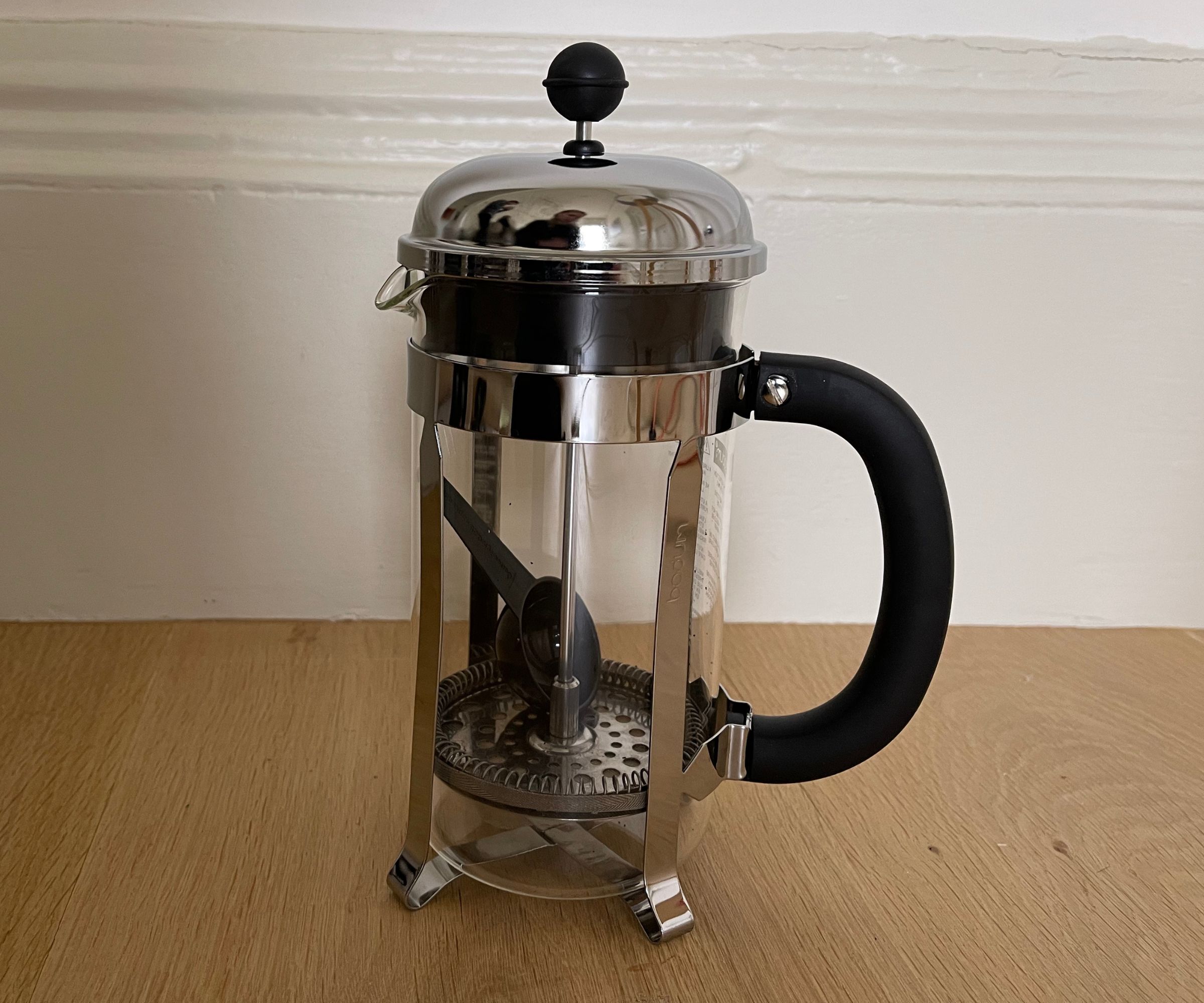I'm a trained barista: here’s the difference between French press and pour-over coffee
French press or pour-over? Here's my expert insight into the taste, method and convenience of each brewing ritual


If you make specialty coffee at home, you'll either be team French press or team pour-over. Both methods have been used for decades to create authentic, artisanal coffees. They're a timeless investment, but what's the difference?
As a trained barista and coffee geek, I've tested the best French presses and the best pour-over coffee makers on the market. Each brewing technique offers a different ritual and imparts a unique flavor to your coffee. Plus, French presses can be used to make more than just coffee (I've seen people use them to make cold brew coffee, sangria, infused oils, and more).
I'll talk you through the differences between French press and pour-over coffee, as well as which method to choose to suit your morning coffee ritual.

Bodum French Press vs. Pour Over
Head to head
Here's a brief comparison table. I'll go into more detail on the equipment, brewing process, tasting notes, cost and my personal recommendations below.
| Header Cell - Column 0 | French Press | Pour Over | Header Cell - Column 3 |
|---|---|---|---|
| Equipment | A French press and kettle | A pour-over dripper, filter, and kettle | Row 0 - Cell 3 |
| Brewing Process | Immersion | Infusion | Row 1 - Cell 3 |
| Coffee Beans | Works well with chocolatey dark roasts | Suited to lighter, specialty roasts | Row 2 - Cell 3 |
| Flavor Profile | Bold and rich | More delicate | Row 3 - Cell 3 |
| Ease of Use | Simple and more forgiving | Requires a little patience | Row 4 - Cell 3 |
| Clean up | Can get messy with wet coffee grounds and oils left in the press | Generally easier to clean as used filters can be discarded | Row 5 - Cell 3 |
| Cost | Minimal ongoing expenses | Requires extra equipment and paper filters | Row 6 - Cell 3 |
| Total time | 5-15 minutes depending on quantity | Between 5-15 minutes | Row 7 - Cell 3 |
Equipment
To make French press coffee, you'll need a French press (also known as a cafetière), ground coffee, and a kettle to boil water.
To make pour-over coffee, you'll need a pour-over coffee maker, ground coffee, paper filters (or a stainless steel filter if preferred), and a kettle. Experts also recommend a gooseneck kettle, as its arched spout provides precise control when pouring water over the coffee grounds (we’ll cover the brewing process next).
You might also consider using a timer for either brewing method, if you're serious about perfecting your coffee ritual.
Brewing Process

The French Press method uses immersion brewing and can take up to fifteen minutes. You will need to spoon ground coffee into your glass carafe. Then, pour hot water (around 200°F) over the grounds. Keep the coffee grounds immersed in the water for around three to eight minutes, before pushing the plunger down through the water, straining out the coffee grounds. Between straining and pouring, leave the coffee to settle, so that you don’t end up with a gritty texture towards the end of your cup.
The pour-over method takes a similar amount of time. It requires similar equipment, with the addition of a paper filter. Simply sit the filter in your carafe and place your coffee grounds inside the filter. Pour hot water over the grounds in a circular motion. As the water swirls through the coffee, it infuses with all the flavors before filtering into the jug.
For both methods, start by pouring a small amount of water over the grinds and leave this to foam and bloom for 30 seconds. This will help to form a solid base for the rest of the coffee to infuse into.
Convenience
I think using a French press is generally easier – a great option if you have busy mornings and want to get on with other things, while your coffee brews.
Pour-over is a little more fiddly with paper filters and requires steady, patient pouring. Experts recommend pausing every now and then to let the water seep through. This method demands your attention for the entire 5-15 minutes it takes to brew. If you’re not using specialty roast beans, it might not be worth the extra effort, but I do think it's a beautifully calming ritual.

Taste
Although it can be slightly grainy toward the bottom of the cafetière, the French press method delivers a strong, rich coffee that complements chocolatey and robust roasts. The immersion method extracts oils from the coffee beans and retains them in your blend. This gives a deep, full-bodied flavor that pour-over cannot quite match. However, this can sometimes result in a slightly more acidic taste. Recently, people have asked whether French press coffee is bad for us. I did some research and concluded it's safe, but if you have high cholesterol it might not be the one for you.
If you prefer a lighter coffee, the pour-over method is a better choice. The paper filter in this method removes many of the coffee oils, resulting in a cleaner, more nuanced cup. Unlike the French press, which produces a richer and bolder brew, pour-over is ideal for showcasing lighter roasts and specialty coffees, allowing you to fully appreciate their delicate and balanced flavor profiles.
Clean Up

French presses might need a little attention around the fiddly plunger, but are generally straightforward. The key is not to leave your plunger in the coffee grinds for a long time. The longer you leave it, the more embedded the coffee granules become. Using warm, soapy water, rinse and clean all parts of the carafe and plunger. If you need more tips, I've written a whole article on how to clean a French press coffee maker.
It's easy to clean a pour-over coffee maker. Empty the paper filter into the bin or compost. Rinse out the jug and you’re ready to start again.
Both options are normally dishwasher-safe, and they easily fit into drawers and cupboards, so they'll neatly store away in smaller kitchens too.
Cost
Both coffee makers cost roughly the same price – much less than a bulky coffee machine. It’ll depend on the model, but you could expect them to sit between $20 and $150.
It’s also worth noting that you’ll probably have an extra ongoing cost with a pour-over coffee machine because they tend to require single-use filter papers. You will probably need to invest in a gooseneck kettle too, for greater precision and better tasting coffee (we chose the Fellow Stagg Kettle as our favorite in our guide to the best kettles).
However, overall the cost is much cheaper than an espresso machine. Neither of these methods require pods, or constant connection to water and electricity, which are all ongoing costs.
Best French press

Bodum Chambord French Press
Our expert review:
Specifications
Reasons to buy
Reasons to avoid
Even though the team as a whole judged it second in our roundup of the best French presses, this is my personal favorite. It is an affordable option that doesn’t skimp on any of the details. The design looks great but is compact enough to store away if you don’t want it out on your surface all the time. Bodum built it with a double filter to minimize the chance of stray coffee grains finding their way into your cup. It’s easy to use and dishwasher safe too.
This came second in our roundup because it isn’t as thorough at filtering and warming as the Espro (which sits in first place). Bodum’s thinner glass carafe isn’t as insulating, but it is one of the reasons that I prefer Bodum’s design. Glass makes it much easier to check on your coffee and judge when is the right time to take the plunge.
You can find out more in my full review of the Bodum Chambord French Press.
Best Pour-Over

Bodum Pour-Over Coffee Maker
Our expert review:
Specifications
Reasons to buy
Reasons to avoid
This is an unusual example of pour-overs because it uses a stainless steel filter rather than a paper one. From a sustainability and cost perspective, this is great. It puts this in a great position to directly compare to a French press. The Bodum is dishwasher safe (aside from the removable cuffs) and, I was pleased to find, it very budget-friendly. It can cater to larger groups of three to four, too.
Although I love the built-in filter, it doesn’t produce the same light and smooth taste that you would normally expect from a paper filter pour-over. Other users commented on the spout’s shape making it easy for spillages. Although I didn’t struggle with this, it’s easy to see that others might, especially if you have mobility issues.
You can find out more in my full review of the Bodum Pour-Over.
Which should I buy?

This is something for you to decide. It really comes down to flavor; if you prefer bold and rich coffee, go for a French press. If you are used to the taste of filter coffee or want to start a beautiful new ritual, try a pour-over coffee maker.
FAQs
Should I buy a French press or pour-over coffee maker?
These are both great coffee makers for those who are short on space. They can store away easily and are much more subtle on the countertop. They don’t make the noise that an espresso machine might and are more portable, because you don’t need to plug your coffee maker into electricity and water.
Do I need coffee pods for a French press or pour-over?
No. This is one of the bonuses of these coffee makers. You won’t ever use or need to buy coffee pods.
What is the difference in taste between French press and pour-over coffee?
The French press gives a stronger, richer flavor. The pour-over will taste lighter and more like standard filter coffee.
Do I need to grind my coffee differently for a French press and pour-over coffee?
Yes, you need to grind your coffee slightly differently to suit a French press or pour-over. Both methods require a medium grind, but for a French press, a medium-coarse grind is ideal as you don't want grounds to slip through the metal filter and lead to a bitter taste.
Pour-over coffee benefits from a medium-fine grind, which increases the surface area of the grounds and allows for better flavor extraction. You can buy ground coffee in the grocery store, or you can buy coffee grinders to do it yourself. The best coffee grinder is the Fellow Ode Grinder, which makes perfect ground coffee for pour-over.
Design expertise in your inbox – from inspiring decorating ideas and beautiful celebrity homes to practical gardening advice and shopping round-ups.

Laura is our eCommerce editor. As a fully qualified barista, she's our expert in all things coffee and has tested over thirty of the best coffee makers on the market. She has also interviewed Q-Graders and world-leading experts in the coffee industry, so has an intimate knowledge of all things coffee. Before joining Homes & Gardens, she studied English at Oxford University. Whilst studying, she trained as a master perfumer and worked in the luxury fragrance industry for five years. Her collection of home fragrance is extensive and she's met and interviewed five of the world's finest perfumers (also known as 'noses'). As a result of this expansive fragrance knowledge, she always puts quality and style over quantity and fads. Laura looks for products which have been designed simply and with thoughtful finishes.
- Courtney Irwin
- Lydia HaymanKitchen Editor